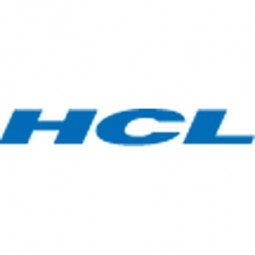
技术
- 网络安全和隐私 - 数据库安全
- 网络安全和隐私 - 身份认证管理
- 平台即服务 (PaaS) - 数据管理平台
适用行业
- 医疗保健和医院
客户
未公开
关于客户
医疗技术提供商
挑战
随着公司扩展到新的地理和治疗领域,现有的患者管理平台性能无法支持未来的业务需求。这导致最终用户的满意度受到影响。
一些业务挑战包括:
基于价值的护理交付:强大的平台支持以最高安全性管理患者数据的各种设备、数据和应用程序。这有利于向最终用户提供定制护理,提高患者对药物的依从性。
业务效率:与传统企业应用程序集成,以确保 BU 之间无缝交换客户、产品和销售数据,并在各个企业级别实现 KPI 跟踪
缩短上市时间:能够对从多个来源收集的数据运行复杂的分析模型和数据科学功能,以简化开发周期。
解决方案
HCL 的研讨会主导了 DEFINE 参与,以识别基于现有系统的严格 AS-IS 分析中的差距。在 BUILD 阶段,HCL 开发了一个连接患者、医生、销售和运营团队的端到端平台堆栈
提议的架构具有以下核心组件:
支持私有云和公共云平台的架构,具有广泛的协议支持,可将患者和业务端点集成到其他业务用例中
物联网堆栈所有层的数据安全,以确保隐私和安全合规性。此外,根据区域法律和法规要求,将数据隔离到不同级别
与第 3 方应用程序、客户现有应用程序和 IT 基础架构兼容的架构,从而实现无缝集成。
数量效益

Case Study missing?
Start adding your own!
Register with your work email and create a new case study profile for your business.
相关案例.

Case Study
Hospital Inventory Management
The hospital supply chain team is responsible for ensuring that the right medical supplies are readily available to clinicians when and where needed, and to do so in the most efficient manner possible. However, many of the systems and processes in use at the cancer center for supply chain management were not best suited to support these goals. Barcoding technology, a commonly used method for inventory management of medical supplies, is labor intensive, time consuming, does not provide real-time visibility into inventory levels and can be prone to error. Consequently, the lack of accurate and real-time visibility into inventory levels across multiple supply rooms in multiple hospital facilities creates additional inefficiency in the system causing over-ordering, hoarding, and wasted supplies. Other sources of waste and cost were also identified as candidates for improvement. Existing systems and processes did not provide adequate security for high-cost inventory within the hospital, which was another driver of cost. A lack of visibility into expiration dates for supplies resulted in supplies being wasted due to past expiry dates. Storage of supplies was also a key consideration given the location of the cancer center’s facilities in a dense urban setting, where space is always at a premium. In order to address the challenges outlined above, the hospital sought a solution that would provide real-time inventory information with high levels of accuracy, reduce the level of manual effort required and enable data driven decision making to ensure that the right supplies were readily available to clinicians in the right location at the right time.

Case Study
Gas Pipeline Monitoring System for Hospitals
This system integrator focuses on providing centralized gas pipeline monitoring systems for hospitals. The service they provide makes it possible for hospitals to reduce both maintenance and labor costs. Since hospitals may not have an existing network suitable for this type of system, GPRS communication provides an easy and ready-to-use solution for remote, distributed monitoring systems System Requirements - GPRS communication - Seamless connection with SCADA software - Simple, front-end control capability - Expandable I/O channels - Combine AI, DI, and DO channels

Case Study
Driving Digital Transformations for Vitro Diagnostic Medical Devices
Diagnostic devices play a vital role in helping to improve healthcare delivery. In fact, an estimated 60 percent of the world’s medical decisions are made with support from in vitrodiagnostics (IVD) solutions, such as those provided by Roche Diagnostics, an industry leader. As the demand for medical diagnostic services grows rapidly in hospitals and clinics across China, so does the market for IVD solutions. In addition, the typically high cost of these diagnostic devices means that comprehensive post-sales services are needed. Wanteed to improve three portions of thr IVD:1. Remotely monitor and manage IVD devices as fixed assets.2. Optimizing device availability with predictive maintenance.3. Recommending the best IVD solution for a customer’s needs.

Case Study
HaemoCloud Global Blood Management System
1) Deliver a connected digital product system to protect and increase the differentiated value of Haemonetics blood and plasma solutions. 2) Improve patient outcomes by increasing the efficiency of blood supply flows. 3) Navigate and satisfy a complex web of global regulatory compliance requirements. 4) Reduce costly and labor-intensive maintenance procedures.

Case Study
Cloud-based healthcare solution for Royal Philips
Royal Philips wanted to launch its cloud-based healthcare solution HealthSuite Digital Platform in China to deliver services to help cope with challenges related to urbanization and population growth. Philips wanted to achieve this goal by combining mobile, cloud computing and big data technologies. To bring this platform and product to market, Philips required cloud computing and local technical service capabilities in China, in addition to a flexible IT infrastructure that could handle user requests.








